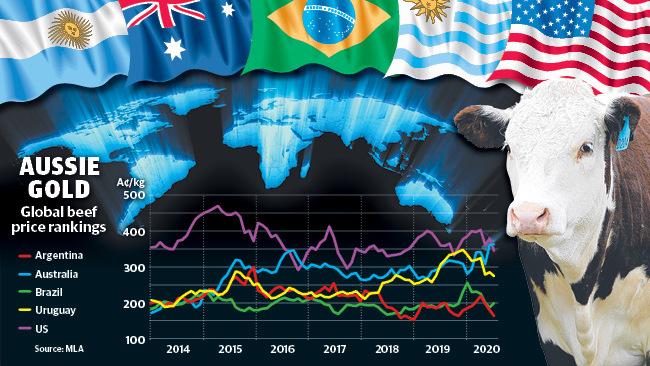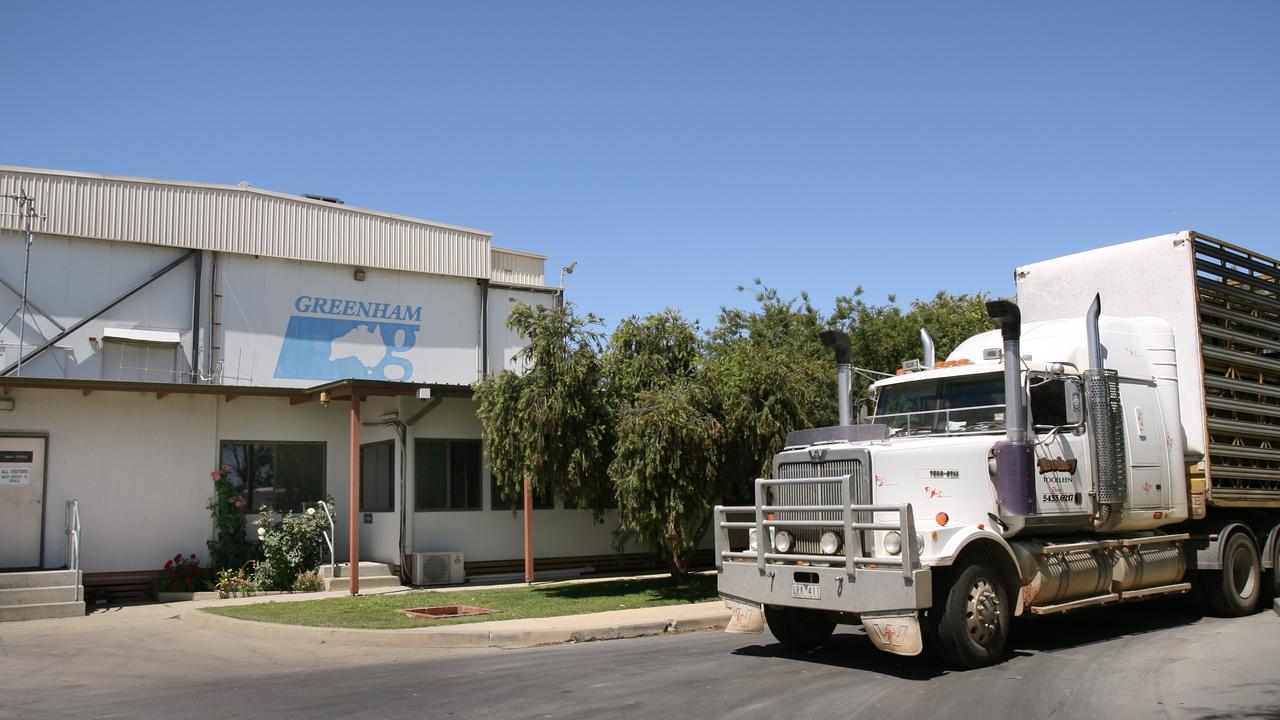A risky global spot for beef
Australia now has the highest-priced beef in the world, overtaking usual market leader, the US, writes Jenny Kelly

BEEF producers are spending money on young cattle as if they are on top of the world.
And in one sense, they are.
As the graph shows, Australia now has the highest-priced beef in the world, overtaking the usual market leader, the US, this season.
It is a rare occurrence, as the data that tracks the price trendline for prime slaughter steers in each country shows.
Only once in the past six years has Australia stepped ahead of the dominant US, and it was also linked to season conditions and supply.
In 2016 as Australia came out of drought, our steer prices stepped ahead of the world pack.
It is happening again as feed conditions boom and the key drivers for our local industry becomes cattle supply and restocking demand.
There are two ways to view this.
On one hand having record high slaughter returns for beef is great news for producers, and average returns of $2000- plus for heavy steers gives producers the confidence and ability to be paying $1200 to $1700 for young store replacements.
On the other hand, having Australia break ranks with its global beef competitors to be the only major country on an upward price trend represents risk.
Consider the latest figures for beef imports into the US grinding beef market, which plays a key role in setting price values on the world stage.
All countries have been intent on pushing beef into the US after a coronavirus outbreak disrupted local American slaughter supplies and caused demand and prices to spike.
The most up-to-date official figures are for June, and they show a 17 per cent surge in beef imports into the US.
And the country that increased its presence most into the US during that month was Mexico, which sold 50 per cent more beef into America compared with 12 months ago.
Mexico is not on the graph, but its beef is at lower price point than Australia.
Fast-forward to now, and the trend of countries targeting the US for beef sales continues, according to analysis from the Steiner Consulting Group.
In its latest update of the state of play in the US beef market, Steiner reported that:
TOTAL beef imports into the US for the first week of August totalled nearly 28,000 tonnes, which was 37 per cent higher than the corresponding week a year ago;
IN the past four weeks, imports of beef have trended 29 per cent higher than last year.
THE biggest growth in sales has come from countries such as Argentina, Uruguay and Mexico.
Beef sales to the US from Australia have actually slowed due to reduced cattle sales as the country comes out of drought.
To point to the graph again, cattle prices from the South American countries are much lower than Australia, with Argentina sitting at the bottom of the list by a long way.
Yes there is differences in product quality and specs between Australia and competitors such as Argentina.
But price still holds a lot of sway, as the Steiner Group noted in its latest forecasting for grinding beef in the US.
The report noted “increased competition” from South and Central America presents challenges for importers looking to convert some of their Australian and NZ inventory.
“This will become even more of a problem as more buyers adjust their specs to allow grinding beef from these (lower priced) markets,” the report stated.
There is, however, a lot of market data collected for beef, and the US situation outlined above is only a segment.
A lot of the outlook for cattle depends on how analysts are interpreting the coronavirus pandemic and its impact on global economies and demand and prices for meat sales going forward.
Sifting through this information is like trying to tune a TV with one person balancing on the roof to twist the antenna.
Some information is crystal- clear. Other channels coming through are a blurry mess, and the picture could swing from OK to something cattle producers would rather not see.
The strongest positives for Australian producers centre around the season and herd rebuilding after the drought.
The latest burst of rain has cemented the spring across the major grazing areas of NSW and Victoria, and is forecast to keep cattle prices tracking at strong levels this spring amid tight supplies.
Meat and Livestock Australia has forecast the national cattle kill to drop to 7.4 million this year, or 18 per cent, with no significant recovery until 2023 when numbers are forecast to climb back above 8.2 million.
The risk factors for beef all swirl around the unknowns connected to coronavirus and the fallout linked to the economy, jobs and consumer spending.
It is why farmers need to be aware that Australia’s booming cattle market is not being replicated around the world, as noted by MLA in its latest look at the industry.
“Australia now faces a cattle market out-of sync with key competitors and with a global recession on the horizon,” according to the report.
It further surmised: “The potential for increased competitor pressure needs to be balanced against tighter Australian (cattle) supplies.’’
MORE
Prices heat up at Euroa store cattle sale
Warrnambool cattle sale: Super season leads to strong prices
The Weekly Times Coles 2020 Farmer of the Year awards nomination form


